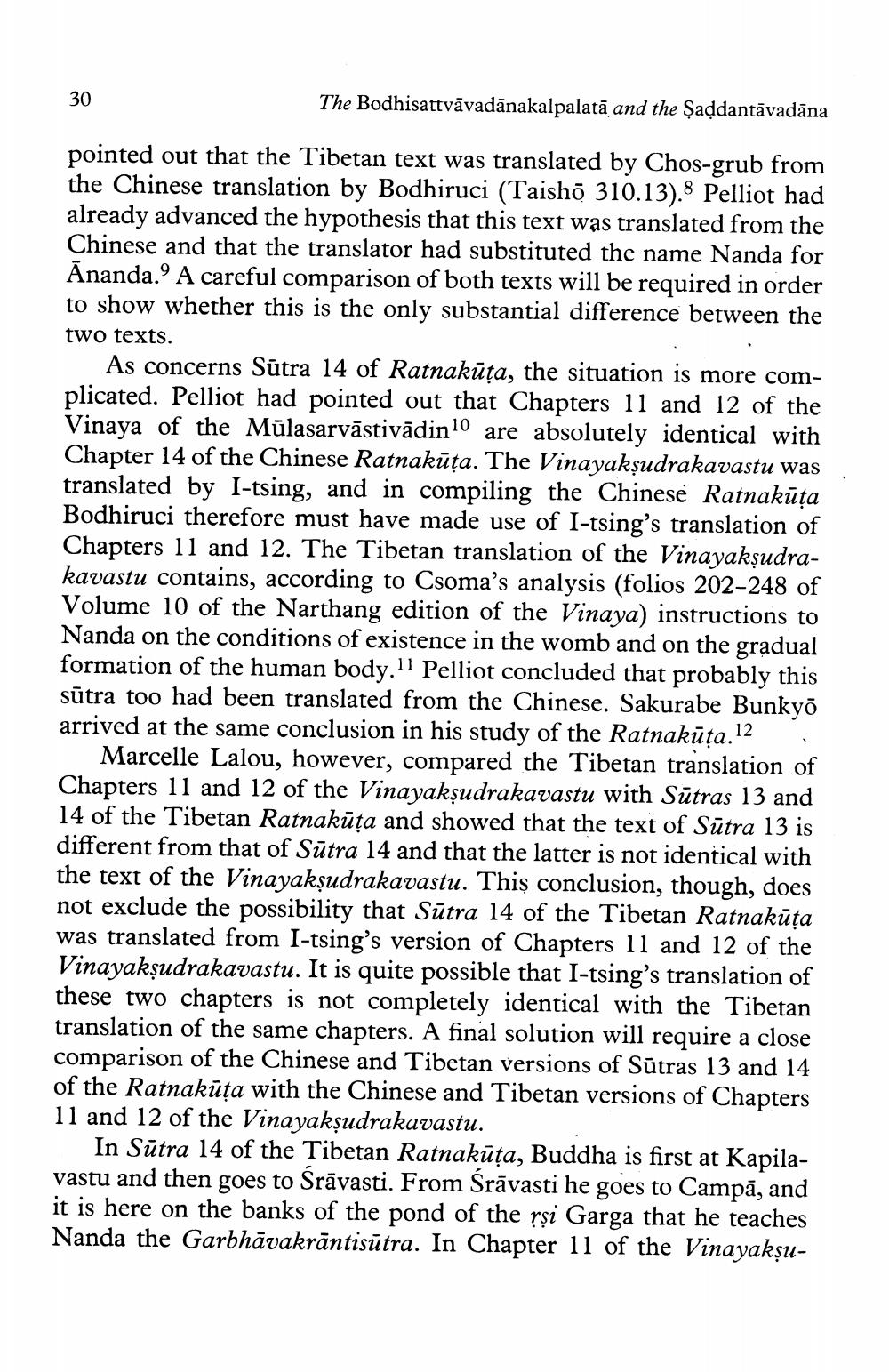Book Title: Bodhisattva Vadana Kalpalata And The Saddantavadana Author(s): J W De Jong Publisher: J W De Jong View full book textPage 4
________________ The Bodhisattvāvadānakalpalata and the Saddantāvadāna pointed out that the Tibetan text was translated by Chos-grub from the Chinese translation by Bodhiruci (Taisho 310.13). Pelliot had already advanced the hypothesis that this text was translated from the Chinese and that the translator had substituted the name Nanda for Ananda. A careful comparison of both texts will be required in order to show whether this is the only substantial difference between the two texts. As concerns Sūtra 14 of Ratnakūta, the situation is more complicated. Pelliot had pointed out that Chapters 11 and 12 of the Vinaya of the Mūlasarvāstivādin 10 are absolutely identical with Chapter 14 of the Chinese Ratnakūța. The Vinayaksudrakavastu was translated by I-tsing, and in compiling the Chinese Ratnakūța Bodhiruci therefore must have made use of I-tsing's translation of Chapters 11 and 12. The Tibetan translation of the Vinayakṣudrakavastu contains, according to Csoma's analysis (folios 202-248 of Volume 10 of the Narthang edition of the Vinaya) instructions to Nanda on the conditions of existence in the womb and on the gradual formation of the human body.11 Pelliot concluded that probably this sūtra too had been translated from the Chinese. Sakurabe Bunkyo arrived at the same conclusion in his study of the Ratnakūța.12 . Marcelle Lalou, however, compared the Tibetan translation of Chapters 11 and 12 of the Vinayakṣudrakavastu with Sūtras 13 and 14 of the Tibetan Ratnakūța and showed that the text of Sūtra 13 is. different from that of Sūtra 14 and that the latter is not identical with the text of the Vinayaksudrakavastu. This conclusion, though, does not exclude the possibility that Sūtra 14 of the Tibetan Ratnakūta was translated from I-tsing's version of Chapters 11 and 12 of the Vinayaksudrakavastu. It is quite possible that I-tsing's translation of these two chapters is not completely identical with the Tibetan translation of the same chapters. A final solution will require a close comparison of the Chinese and Tibetan versions of Sūtras 13 and 14 of the Ratnakūța with the Chinese and Tibetan versions of Chapters 11 and 12 of the Vinayaksudrakavastu. In Sūtra 14 of the Tibetan Ratnakūța, Buddha is first at Kapilavastu and then goes to Srāvasti. From Srāvasti he goes to Campā, and it is here on the banks of the pond of the rsi Garga that he teaches Nanda the Garbhāvakrāntisūtra. In Chapter 11 of the VinayakşuPage Navigation
1 2 3 4 5 6 7 8 9 10 11 12
